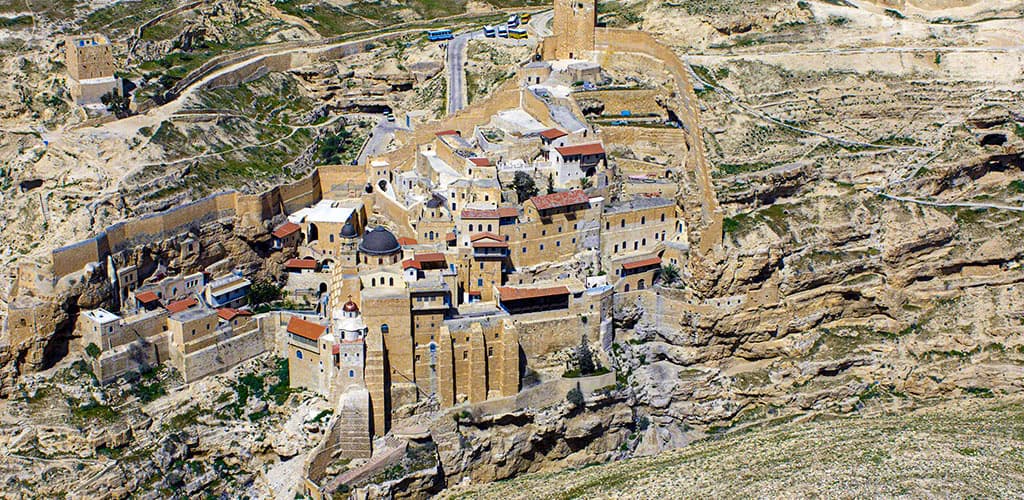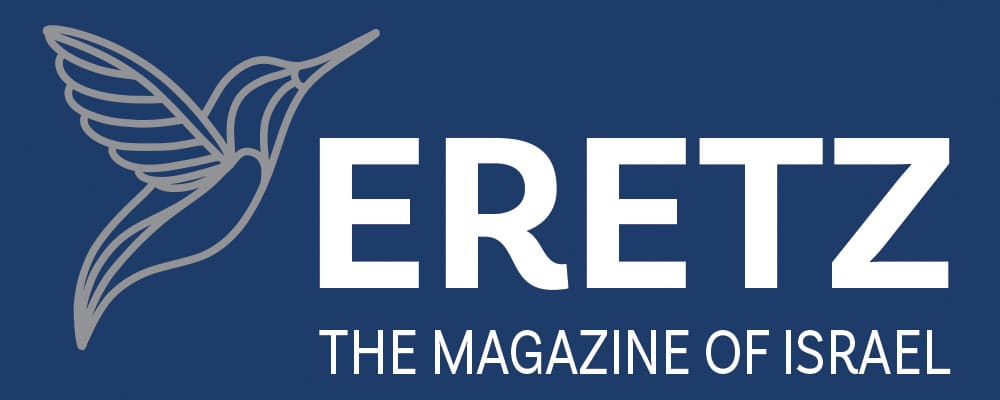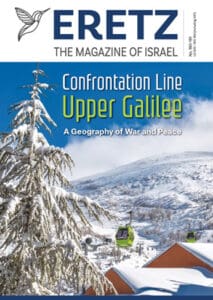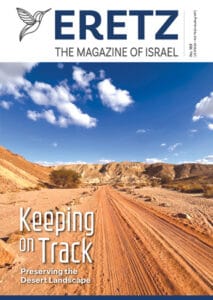
The land of Judea is in the center of the Land of Israel. Steep slopes climb up its western side to an altitude of almost 3,000 feet above sea level, while its eastern sides falls in a series of steps to the cliff of the Great Rift Valley along the shores of the Dead Sea.
There is no specific geographical area called the Land of Judea. Nevertheless, the State of Israel and the Palestinian Authority saw fit to define the area for us: the Gush Etzion Regional Council on the one hand and the Bethlehem Governorate on the other, have outlined the geographical area of this guide: 340 square kilometers (130 square miles), stretching south of Jerusalem to the north of Hebron, between the lowlands in the west and the Dead Sea in the east.
In addition, this area is divided between Area A – under full Palestinian Authority administrative and security control, Area B – under Palestinian Authority administrative control and joint Israeli and Palestinian security control, and Area C – under Israeli administrative and security control. The whole area is bisected by borders, security fences, bypass roads, and checkpoints.
The Land of Judea is an area with a fascinating history. The home of the biblical forefathers; Abraham, Issac, and Jacob, the area of the Davidic and Solomonic kingdom of Judah, the homeland of the prophets Amos and Jeremiah, the birthplace of Jesus, the land of the Edomites who joined the Jewish Hasmonean Kingdom. King Herod built his royal estate in the area as well as a system of aqueducts that supplied water to Jerusalem. Bar Kokhba, together with Rabbi Akiva, led the second Jewish rebellion against Rome from this area. After the destruction of the Jewish villages in the Land of Judea, following the revolt, in the fourth century CE the Byzantine Desert Fathers built monasteries and churches for the thousands of hermits that settled in the Desert of the Holy City – i.e. the Judean Desert.
This guide is an attempt to shed light on this unique area. In parts of it, Areas A, Israelis are not permitted to enter without permission from the Civil Administration of the Israel Ministry of Defense. Other areas, deep in the Judean Desert, can only be reached by off-road vehicles. Nevertheless, for people living in Israel and visitors from abroad, the Land of Judea is a region where a deeper insight of this land, from the past to the present, can be gained – notwithstanding the political opinion of the reader.
Mar Saba Monastery
Kidron Canyon
The monastery is in area C
The paved road to the monastery runs from the village of Ubidiya, in Area A. Alternatively, a desert track for off-road vehicles leads to the monastery from the Hurkaniya Valley. The track reaches the northern slope of the Kidron Riverbed, from which a footpath leads down into the canyon and up to the monastery. Women are not allowed into the monastery.
Sunday-Tuesday, Thursday and Saturday 08:00 until sunset.
The monastery is closed to visitors on Wednesdays and Fridays (the fasting days of the week).
On the night of December 17, the monks mark the feast of St. Sabas by lighting candles in the caves around the monastery.
Founded by Saint Sabas in 483, on the eastern side of the Kidron Valley this is the most famous monastery of the Judean Desert monasteries. A few years after living alone in a cave in Kidron Canyon Sabas was joined by seventy hermits. Later a laura (monastic community) was founded on the western side of the gorge. The Church of Theoktistos was built in 486 and consecrated in 491. The constant growth of the community meant that soon after, in 502, the Church of the God-bearing Virgin Mary, in Greek Theotokos, was built to serve as the main church of the monastery. Saint Sabas’ Typikon, the set of rules applied at the Great Laura and recorded by the saint, eventually became the model for monastic life and liturgical order known as the Byzantine Rite.
Mar Saba was the home of St. John of Damascus (676–749), a key religious figure in the Iconoclastic Controversy, who, around 726, wrote letters to the Byzantine emperor Leo III the Isaurian refuting his edicts prohibiting the veneration of icons. St. John’s tomb lies in a cave under the monastery. Mar Saba was also home to the famous Georgian monk and scribe Ioane-Zosime, who moved before 973 to Saint Catherine’s Monastery, taking several ancient manuscripts with him.
In 1504, the Serbian monastic community of Palestine purchased Mar Saba, at the time abandoned due to Bedouin raids. The Serbs owned the monastery until the late 1630s. The monastery’s significant financial support from the Tsar of Russia allowed them to run the monastery semi-independently from the Patriarch of Jerusalem. The Serbs’ ownership of Mar Saba allowed them to play an important role in the politics of the Orthodox Church of Jerusalem. Serbian control of the monastery ended in the 1600s when the monastery acquired a massive debt due to the simultaneous combination of a building program at the monastery and cutting off of financial support from Russia. The Serbs were forced to sell the monastery to the Patriarch of Jerusalem to pay off their debts.
The monastery, considered among the oldest continuously inhabited in the Christian world, has exerted an important influence on doctrinal developments in the Byzantine Church. The monastery contains the relics of Saint Sabas. The relics were seized by Latin Crusaders in the 12th century and taken to Venice. They remained in Italy until Pope Paul VI returned them to the monastery in 1965 as a gesture of repentance and goodwill toward Orthodox Christianity.
Most of the buildings seen today at the monastery were built during the monastery’s renovation in the 19th century with donations from the Imperial Russian household and Russian pilgrims. Today, about 15 monks live in the monastery. Mar Saba is not connected to the power grid or water supply. The monastery receives its water from cisterns and two tiny springs and its electricity from solar panels.
Over the years, many artifacts, icons, rare manuscripts, including rare copies of the Bible and the New Testament, were collected at the monastery. During the 1970s, most of the library contents were transferred to the Greek Orthodox Patriarchate in Jerusalem.


